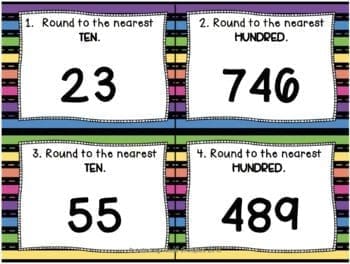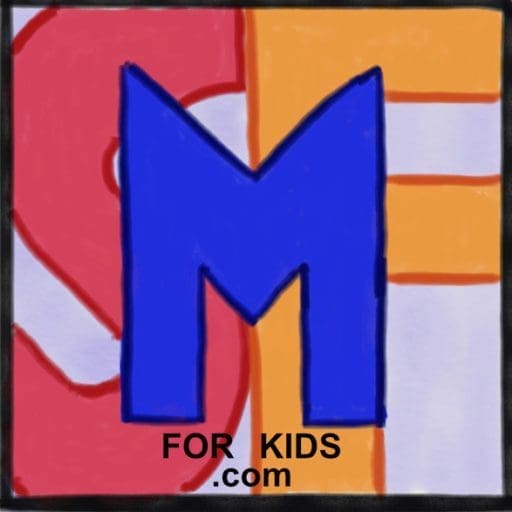
Looking for some new ways to use task cards in your math group or class? Need a fun and engaging way to review or practice skills or practice test questions? Here are a few student favorites. If you need more test prep games please also see my post Review Games For Test Prep.
Team and Partner Games
- Play Team Scoot, Laura Candler’s cooperative learning version of the traditional Scoot game. I love this version because it adds in checking and discussing answers. Bonus: there is no grading for the teacher to do!
- Make a Jeopardy group game by putting task cards in a pocket chart and assigning each a “dollar value.” Each group can have a host with play money to give out for correct answers. Bonus: money math practice!
- Play Solve it Switch It. Each set of partners has 2 task cards. They each solve their problem, then switch cards and solve the other. After they have solved both cards they compare answers. If they match, they then check the key to confirm and move to a new set of cards. If their answers don’t match, they need to rework the problem together.
- Play Quiz Quiz Trade. It’s similar to the game above but each student in a pair only solves the one card they have. Then their partner checks their answers. If correct, then they trade cards and move to a new partner.
- Tape the task cards around the room and let the students hunt to find and answer them. You can have students do this individually or with a partner. This is a huge favorite with my students for some reason! I always hide a few in tricky spots to keep it interesting (under a desk or chair is fun). You can differentiate by giving students different answer sheets. Each student then only answers the questions on his or her answer sheet.
- As a variation on the scavenger hunt, you can actually put the cards inside plastic Easter eggs. Hide them for students to find. Each team (or individual if you have a small group) races to find all the eggs of their assigned color and then correctly solve the problems. Color coding allows for differentiation.
- Need a multiple choice version for test prep? Try this gallery walk activity from Jennifer Findley.
- Let students play Candyland or another simple board game by answering a task card before each move. Even 6th graders I have worked with like Candyland and Hi Ho Cherry-O, and this makes it educational! You can also do the same thing with Jenga- answer a question to pull a block.
- Really need them motivated? Play Pie Face!
- You can use that same game idea with many other fun variations. If students correctly solve their task card, then they could roll a plastic bowling ball to knock down pins, do a corn hole bean bag toss, toss a paper ball into the trash can as “trashketball,” try to make a basket in a small basketball hoop, add a marble to a team or class reward jar, whatever you want and can do in your setting.
- Divide class into teams and have a jigsaw puzzle for each team. If they solve a problem correctly they get a puzzle piece. First team to complete their puzzle wins!
- Play a Connect Four type of competitive class game. As each group completes a task card, they check their answer and, if they right, they can capture a square for their group from a 5×5 box drawn on the whiteboard. Groups race to see which team can get four in a row first.
- Play a hot potato type game where when the music/timer goes off (or any signal you want; I heard of one teacher who passed around “the stinky pig” until it had gas!) the student who is holding the “hot potato” draws a task card for the group or class to solve. Everyone solves on their individual white board. Each person with a correct answer gets a chip. If the student who had the hot potato gets it correct they get bonus chips.
- Play a relay race where a team solves a problem together. Once they agree on the correct answer, they send a runner to write it on the board. After the teacher checks the answer, the student runs back and solves the next problem with the team, then sends a new runner. (I like this version better than individual students having to run up and solve a problem at the board as that is anxiety inducing for many students. It can also lead to students being mean to each other if they think a particular child “made their team lose.”)
Individual Task Card Practice
- Laminate your task cards and lay them face down on the table. Then have each student use a “sticky hand” to pick one to solve.
- Draw simple task cards for each student to answer as they line up or transition to a new activity.
- Number task cards for early finishers or for students to use as a math station. Let them choose which order to complete them in. Give each student a number chart where they can put a small sticker as they complete each card. You can then give them a prize for completing the chart, completing 5 in a row, or whatever is most appropriate to your classroom.
- Along the same lines, here are free printable task card bingo boards.
- Have students use flip grid to give and explain their answer.
- Give students copies of task cards to glue into their interactive notebooks. You could teach them to glue one edge to make a flap and then write the answer underneath.
- Finally, don’t forget to have your students make their own task cards to add to the set! This develops their higher order thinking and lets you check understanding at a deeper level. In addition, the students always love solving each other’s problems!
